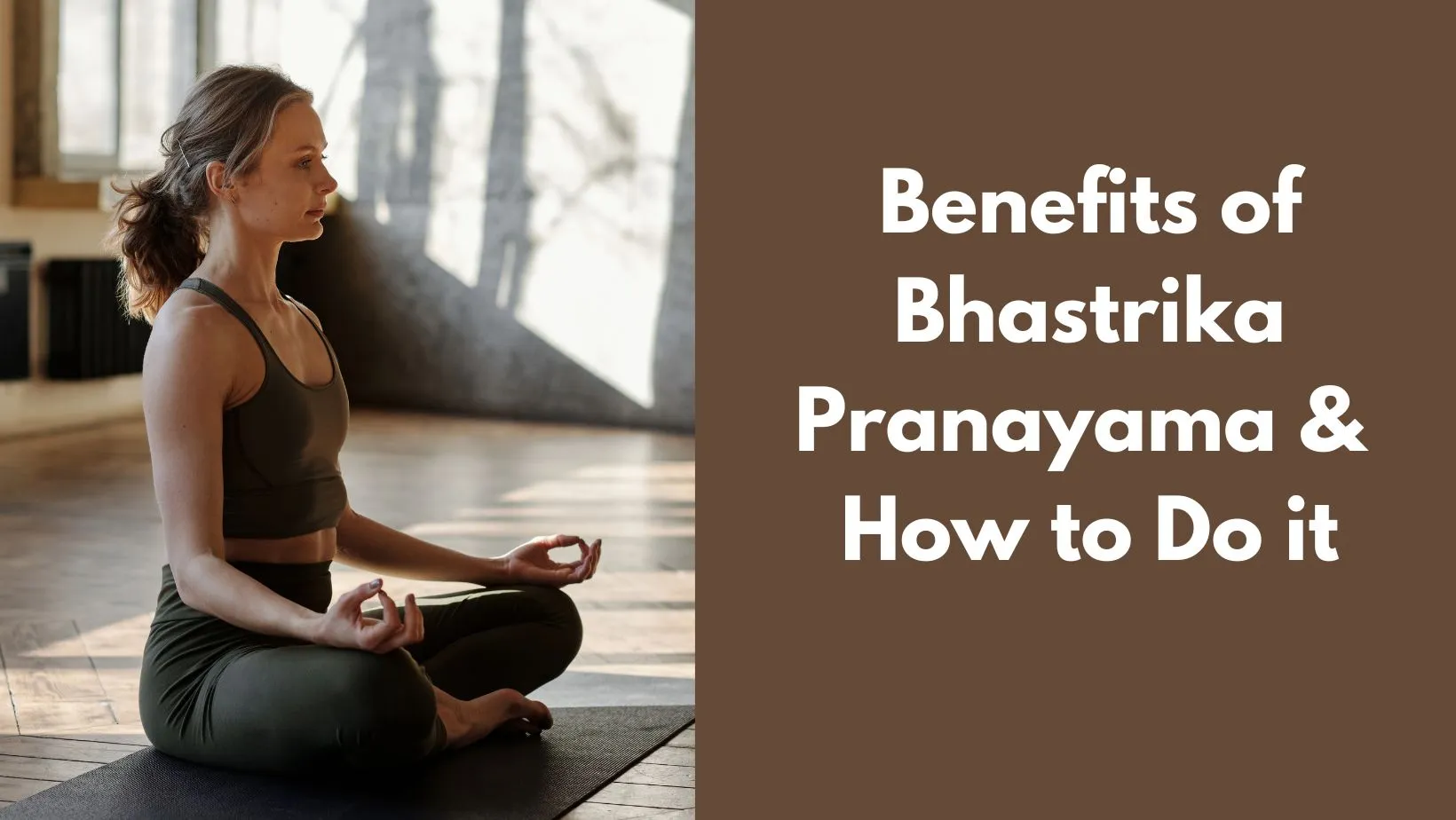Have you ever felt the power of taking a deep breath? Among the many yoga practices, Bhastrika Pranayama is special. It goes beyond just breathing in and out. When you do Bhastrika Pranayama you are on a journey that brings harmony to your mind, body, and spirit. This breathing exercise is not just about breathing. It can bring many good things for you, like making you feel better overall.
This blog will discuss the benefits of Bhastrika Pranayama, also known as bhastrika yoga, and explore how to do bhastrika Pranayama steps. We’ll uncover where this ancient practice originates, its techniques, and the positive impact it can have on your well-being. Join us as we journey through the depths of Bhastrika Pranayama, discovering its roots and uncovering its potential to enhance your physical, mental, and spiritual health. By the end, you’ll have a deeper understanding of Bhastrika Pranayama and its ability to improve your overall quality of life.
Contents
Origins of Bhastrika Pranayama
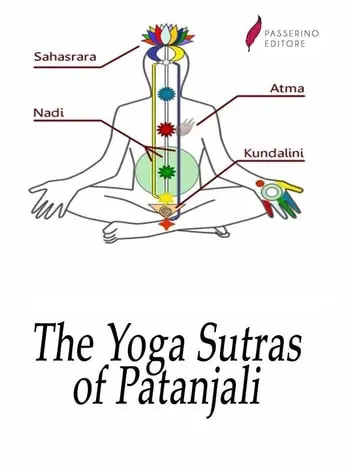
Bhastrika Pranayama, a dynamic yogic breathing technique, finds its roots deeply embedded in the rich tapestry of ancient Indian yogic traditions. Its origins can be traced back to the philosophical and spiritual practices outlined in ancient texts like the Yoga Sutras and Hatha Yoga Pradipika. The term “Bhastrika” itself translates to “bellows” in Sanskrit, symbolizing the forceful and rhythmic nature of the breath during the practice.
As time passed, different yoga groups added their own ideas to Bhastrika Pranayama. Some focused on strict exercises like Hatha Yoga, while others emphasized using energy like Kundalini Yoga. But no matter the style, Bhastrika Pranayama has always been important for controlling the body and mind in yoga.
Bhastrika Pranayama Benefits

- Improved Respiratory Function: Bhastrika Pranayama involves deep breathing exercises that help enhance lung capacity and strengthen the respiratory muscles.
- Increased Energy Levels: The rhythmic breathing pattern of Bhastrika Pranayama helps increase oxygen supply to the body, resulting in a boost of energy and vitality.
- Stress Reduction: Practicing Bhastrika Pranayama can calm the mind and reduce stress and anxiety levels, promoting a sense of relaxation and inner peace.
- Enhanced Focus and Concentration: By regulating the breath and calming the mind, Bhastrika Pranayama improves concentration and mental clarity, making it easier to focus on tasks and activities.
- Detoxification: The deep inhalations and exhalations of Bhastrika Pranayama help eliminate toxins from the body, promoting detoxification and cleansing of the respiratory system.
- Improved Digestion: Bhastrika Pranayama stimulates the digestive organs and enhances blood circulation in the abdominal region, leading to improved digestion and metabolism.
- Boosted Immune System: Regular practice of Bhastrika Pranayama strengthens the immune system, making the body more resistant to illnesses and infections.
- Balanced Nervous System: Bhastrika Pranayama helps balance the sympathetic and parasympathetic nervous systems, promoting overall nervous system health and functioning.
How to do Bhastrika Pranayama
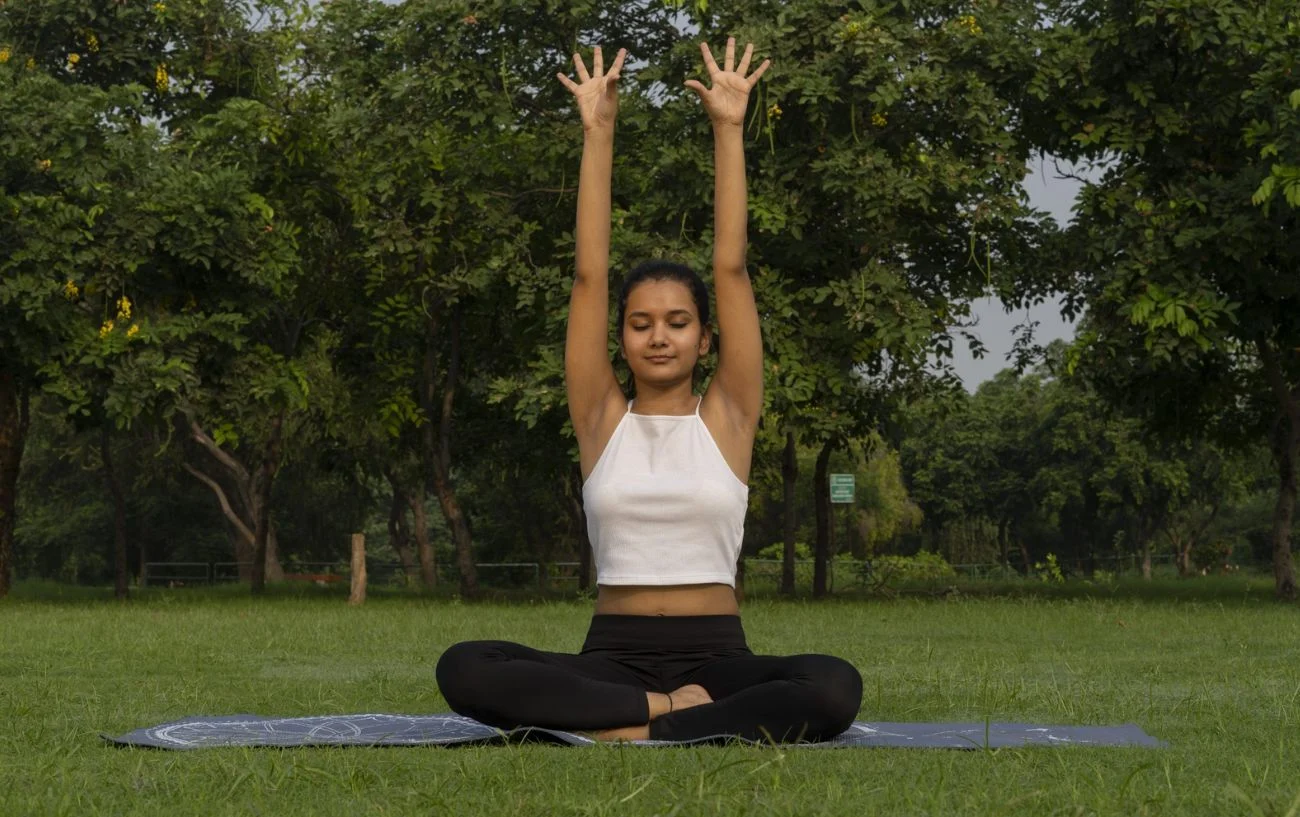
- Preparation: Find a comfortable seated position on the floor or a chair. Sit up straight with your spine erect and your shoulders relaxed. Close your eyes and take a few deep breaths to center yourself.
- Begin with Deep Breaths: Start by taking a deep breath in through your nose, filling your lungs with air. Then, exhale slowly and completely through your mouth, emptying your lungs of air. Repeat this deep breathing pattern a few times to prepare for Bhastrika Pranayama.
- The Technique:
- Inhale Forcefully: Take a deep breath in through your nose, expanding your abdomen as you inhale. As you inhale, imagine filling your lungs with fresh, energizing air.
- Exhale Forcefully: Exhale forcefully and quickly through your nose, contracting your abdomen as you exhale. Imagine expelling all the stale air and toxins from your lungs.
- Repeat: Continue this rhythmic pattern of forceful inhalations and exhalations at a steady pace. The breath should be audible, with a sound resembling the blowing of a bellows.
- Maintain a Steady Pace: Keep the breaths even and steady, without straining or forcing the breath. The movement should come from the diaphragm and abdomen, rather than the chest.
- Duration: Start with practicing Bhastrika Pranayama for about 1-2 minutes initially, gradually increasing the duration as you become more comfortable with the practice. Aim for 5-10 minutes of continuous practice.
- Cool Down: After completing the Bhastrika Pranayama practice, return to normal breathing. Take a few deep breaths to relax and center yourself before opening your eyes.
- Precautions: Avoid practicing Bhastrika Pranayama if you have high blood pressure, heart disease, or any other medical condition without consulting a healthcare professional. Pregnant women should also avoid this practice.
Bhastrika Pranayama Steps
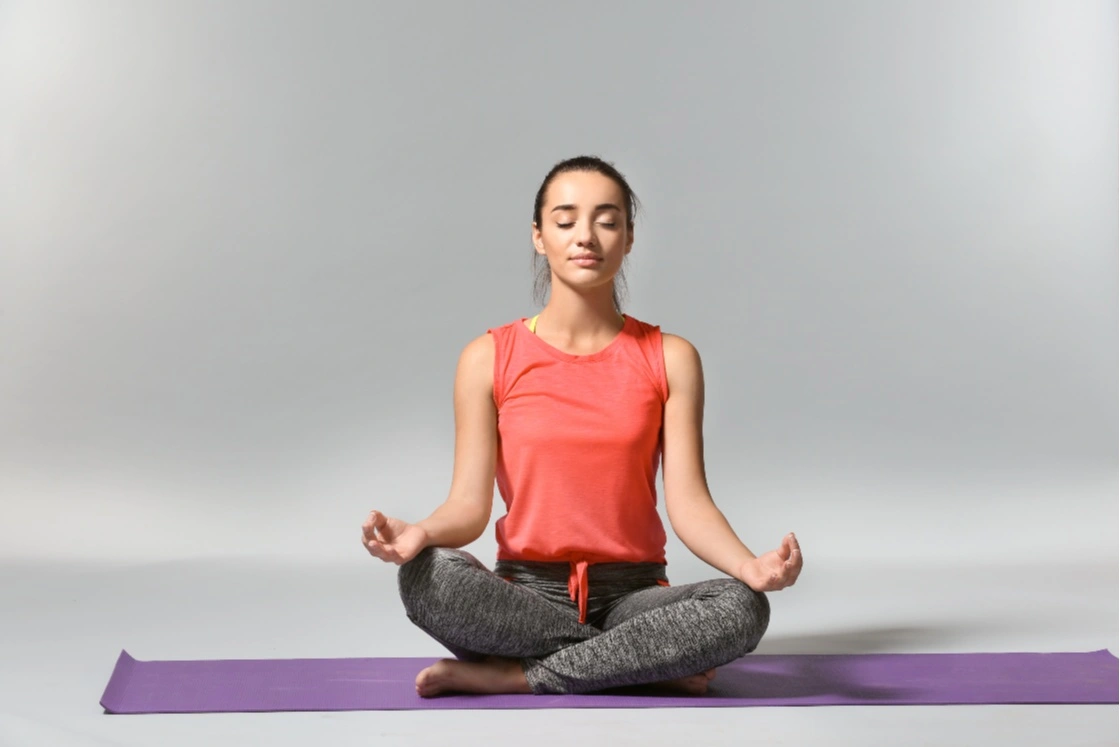
- Sukhasana (Easy Pose):
- Sit comfortably on the floor or a mat with your legs crossed, placing one foot in front of the other.
- Keep your spine straight and shoulders relaxed. You can use a cushion or folded blanket under your hips for added support.
- Pranayama Mudra:
- Place your hands on your knees or thighs, palms facing upward.
- Touch your index finger and thumb lightly, forming a circle with your hands. This is known as Pranayama Mudra and helps to maintain focus during the practice.
- Deep Breath In (Pooraka):
- Close your eyes gently and take a slow, deep breath through your nostrils.
- As you inhale, expand your abdomen first, then allow the breath to fill your chest. Feel the air moving deeply into your lungs.
- Forceful Breath Out ( Chakra):
- Exhale forcefully and rapidly through your nostrils, pushing the air out of your lungs.
- Contract your abdomen towards your spine to expel the breath completely. You may hear a sound resembling the blowing of a bellows.
- Rhythmic Breathing:
- Repeat the cycle of deep inhalations and forceful exhalations continuously and rhythmically.
- Maintain a steady pace, synchronizing your breath with the movement of your abdomen and chest.
- Focused Awareness (Dharana):
- Direct your attention to the sensation of the breath flowing in and out of your nostrils.
- Stay present in the moment, observing the rhythm and intensity of your breath. This focused awareness helps to calm the mind and deepen the practice.
- Gradual Increase:
- Begin with a few rounds of Bhastrika Pranayama, gradually increasing the duration as you become more comfortable and confident in the practice.
- Start with 1-2 minutes initially and gradually work your way up to 5-10 minutes or longer, depending on your level of experience.
Tips for Practicing Bhastrika Pranayama
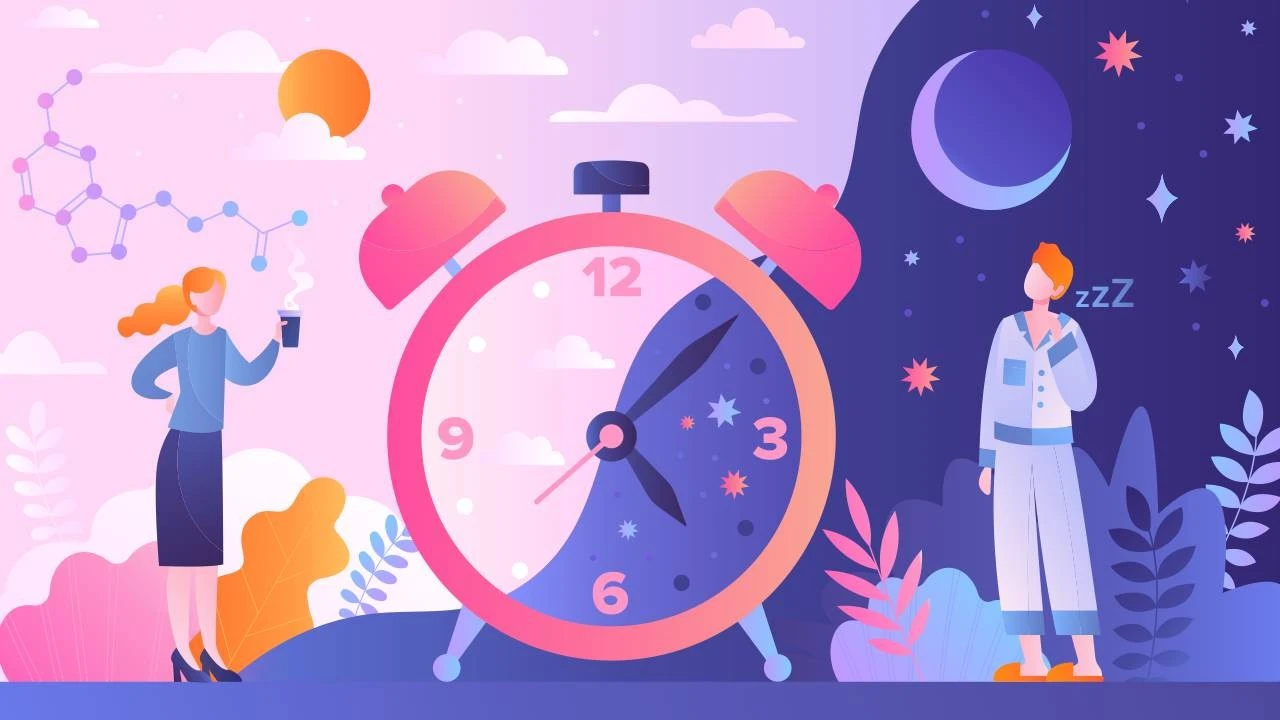
- Start Slowly: If you’re new to Bhastrika Pranayama, begin with shorter sessions and gradually increase the duration as you become more comfortable with the practice.
- Focus on Technique: Pay attention to your breathing technique, ensuring that you inhale and exhale deeply and forcefully through your nostrils.
- Maintain Rhythm: Try to maintain a steady rhythm and pace throughout the practice, synchronizing your breath with the movement of your abdomen and chest.
- Listen to Your Body: Be mindful of any discomfort or strain during the practice. If you feel dizzy or lightheaded, pause and return to normal breathing.
- Practice Regularly: Consistency is key to reaping the benefits of Bhastrika Pranayama. Aim to practice it regularly, ideally daily or a few times a week.
- Combine with Other Practices: Bhastrika Pranayama can be complemented by other yoga practices such as asanas (yoga postures) and meditation. Consider incorporating it into your yoga routine for a holistic approach to health and well-being.
- Consult a Teacher: If you’re unsure about how to perform Bhastrika Pranayama correctly or have any underlying health conditions, it’s advisable to seek guidance from a qualified yoga teacher.
Conclusion
In the end, practicing Bhastrika Pranayama is like taking a journey towards feeling good in your body and mind. It’s a simple way of breathing that can make you feel better inside and out. This special kind of breathing, called Bhastrika Pranayama, doesn’t just help your body—it can also clear your mind, balance your emotions, and make you feel more connected to yourself.
By learning about Bhastrika Pranayama steps and its benefits, you discover how it can boost your health and make you feel more alive. It’s like unlocking a secret power within yourself. And when you practice it regularly, it’s like giving yourself a gift of well-being and vitality.
So, whether you are looking to relax, get more energy, or just feel better overall, Bhastrika Pranayama, also known as Bhastrika Yoga, is here to help you on your journey to a healthier, happier you.
